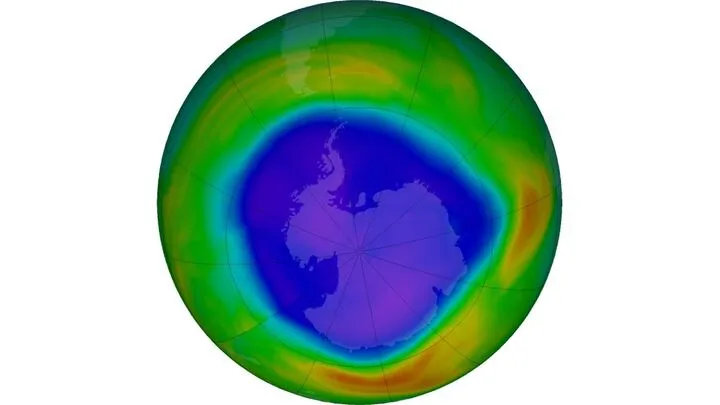Contrary to public opinion, the ozone hole that formed in Antarctica in the last four years was extremely large and long-lasting. Researchers from the University of Otago believe chlorofluorocarbons (CFCs) are not the only culprit. In a study published in the journal Nature Communications, the team analyzed monthly and daily changes in ozone at different altitudes and latitudes within the Antarctic ozone hole from 2004 to 2022.
Editor-in-Chief, Ph.D. Hanna Kessenych. Candidate in the Department of Physics says that they found that there is much less ozone in the center of the ozone hole than there was 19 years ago.
“This means that the hole is not only larger in area, but also deeper throughout much of the arc. We have established a connection between this drop in ozone content and changes in the air entering the polar vortex over Antarctica. This suggests that recent large ozone holes are caused not only by CFCs.” “It shows that it is not caused by
Although the Montreal Protocol on Substances that Deplete the Ozone Layer, in effect since 1987, regulates the production and consumption of man-made chemicals known to deplete the ozone layer, researchers believe other complex factors also contribute to the ozone hole.
“Many of the major announcements about the ozone layer over the past few years have created the public impression that the ‘ozone problem’ has been solved.
“While the Montreal Protocol has greatly improved our situation with ozone-depleting CFCs, the hole has been the largest in the last three years and two of the five years before that.
“Our analysis ended with data for 2022, but today the 2023 ozone hole has already exceeded its size three years ago; at the end of last month it was more than 26 million km2, almost twice the size of Antarctica.”
Kessenich believes it is important to understand ozone variability because of the important role it plays in the Southern Hemisphere’s climate.
“We all know about the recent bushfires and hurricanes in Australia and New Zealand, and the ozone hole in Antarctica is part of this picture.
“Despite the impact of greenhouse gases on climate, the ozone hole interacts with the fragile balance in the atmosphere. Because ozone normally absorbs ultraviolet light, a hole in the ozone layer would not only cause extreme UV levels on the surface of Antarctica, but could also significantly affect where heat is stored in the atmosphere.”
“Downstream impacts include changes in Southern Hemisphere wind patterns and surface climate that may affect us locally.”
But it quickly dispels fears about strong ultraviolet rays. “New Zealanders don’t need to worry about extra sunscreen this year, as the Antarctic ozone hole over New Zealand is generally not open; it is mostly located directly over Antarctica and the South Pole.”













